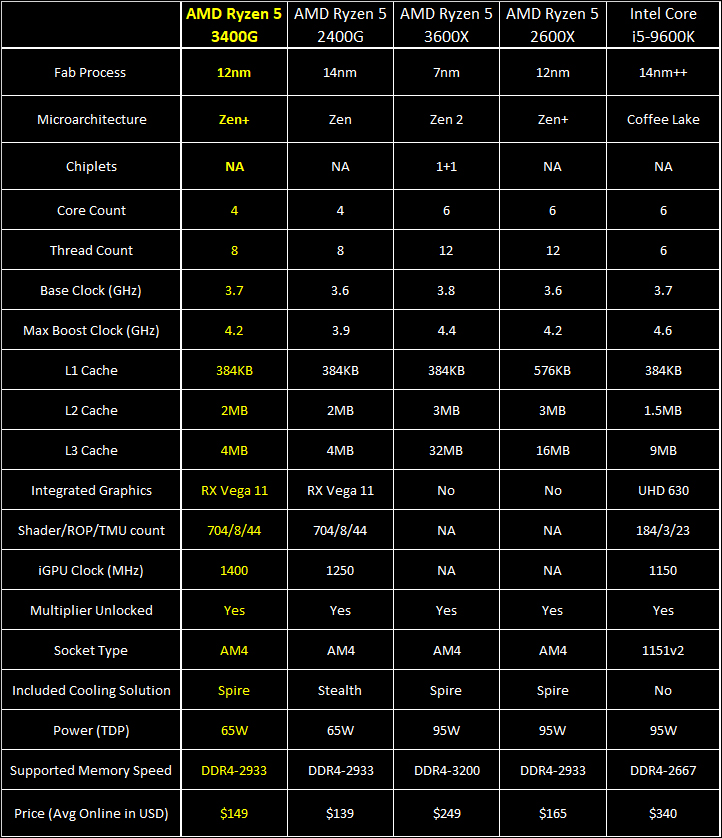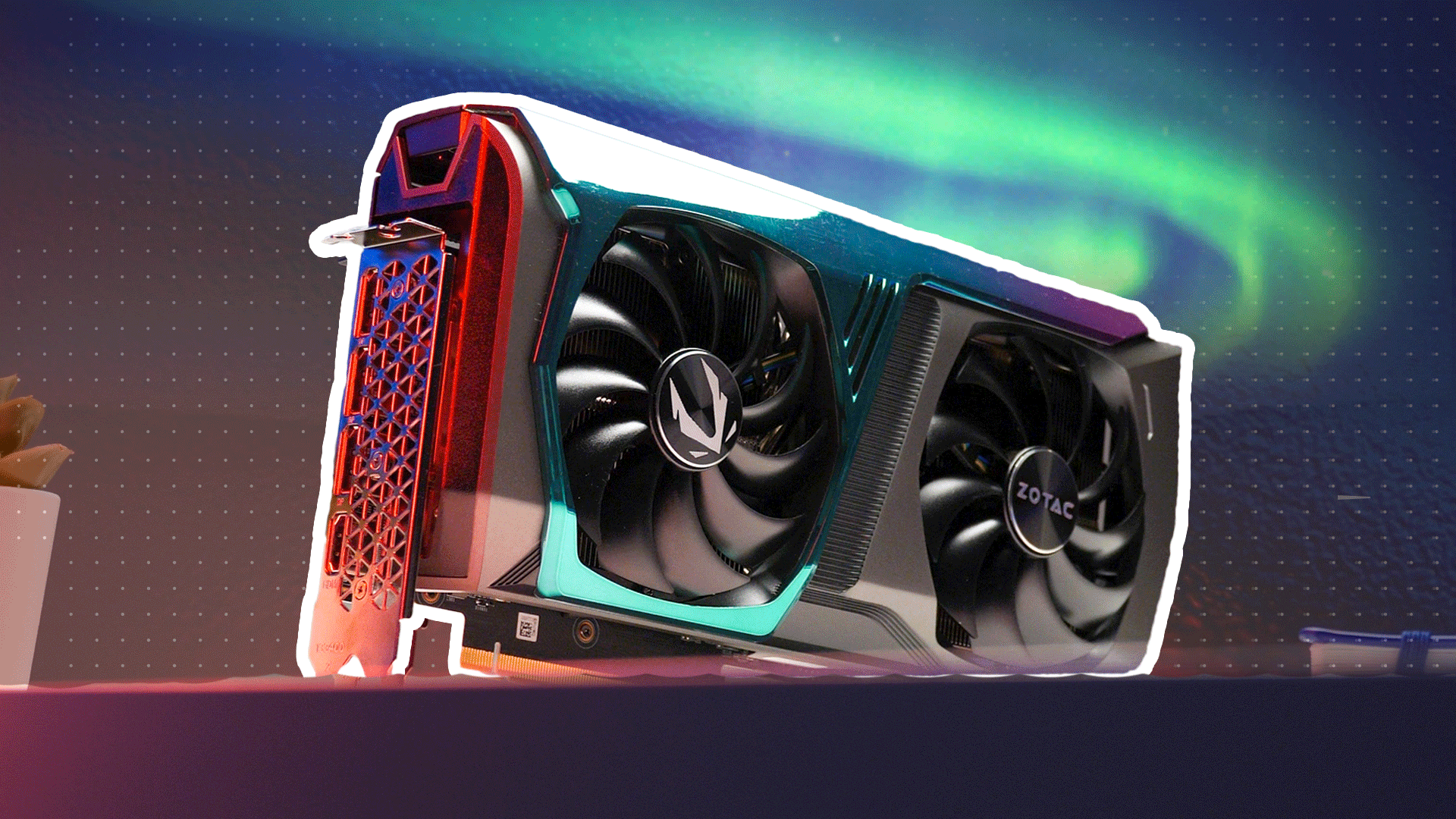Not that long ago we took a long hard look at AMD’s Zen 2 architecture and walked away impressed with what even their mid-range models could offer consumers. However, the Ryzen 3000-series released to date are not just comprised of Zen 2 based designs. In a very interesting twist, AMD has also upgraded their ‘G’ processor models and released two ‘APU’ additions to the Ryzen 3000 list. 3000-series names or no, both are ‘Zen+’ based. To be precise AMD, so far, have released the $99 Ryzen 3 3200G and the $149 Ryzen 5 3400G. Of these two the Ryzen 5 3400G is certainly the more intriguing model and is the one we will be looking at today.

With an asking price of only $149, or $20 less than its predecessor the Ryzen 5 2600G’s launch-day MSRP, the Ryzen 5 3400G is certainly within the realm of anyone and any system build’s budget. For this extremely reasonable asking price buyers will get 4 processing cores with native SMT (8 threads) with a base clock of 3.7Ghz and a boost of 4.2Ghz; an integrated ‘video card’ (aka RX Vega 11) consisting of 11 Compute Units with 704 shaders, 44 ROPSs, all with a clock speed of 1400Mhz. AMD even include a decent Wraith Spire cooling solution in the box.
The fly in the ointment, is these specifications are very, very similar to that of the Ryzen 5 2400G it replaces. So similar that it is only the clock rates that have noticeably changed. On the CPU side the Ryzen 5 3400G gets an addition 100Mhz on the base (3.7Ghz instead of 3.6GHz), 300Mhz on the max single core boost rating (4.2GHz instead of 3.9Ghz), and the RX Vega 11 Compute Units are clocked an additional 150Mhz higher (1.4 vs 1.25GHz). This may not sound like much, but there is also one other change, one that is not all that noticeable. That is the Ryzen 5 3400G is a Zen+ not Zen 1.0 based like the Ryzen 5 2400G was/is. While this does mean the Ryzen 5 3400G does not get the Zen 2 cIOD (and its much improved memory controller), nor the double wide Infinity Fabric 2 interconnect… nor even PCIe 4.0 support; what it does offer however, is a smaller nod fabrication size of 12nm instead of 14nm as well as low level improvements to the Zen 1.0 architecture (and thus the Zen+ moniker that was first seen in the CPU only Ryzen 2000-series). So, it is not as bad as it first appears. Though to be blunt, this upgrade from Zen to Zen+ instead of Zen to Zen 2 is going to controversial to say the least. Thankfully with an asking price so low and tangible improvements the Ryzen 5 3400G may indeed be one of the better value APU’s AMD has released in quite some time… or not. Let’s find out.











